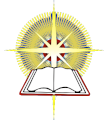Historic Church Building
The New Church of Concord is part of West Concord’s historic district.

Cornerstone Laid October 1904
In the early 1900’s, work began on what would become the Our Lady Help of Christians Catholic parish. For 100 years the parish flourished and saw many baptisms, first communions, weddings, and funerals. In October 2004, the Roman Catholic Archdiocese of Boston slated “Our Lady’s” for closure. The Boston Society of the General Church of the New Jerusalem (The New Church of Concord) bought the church from the Archdiocese in late 2006. Following extensive interior renovations, the building was reopened for worship as the New Church of Concord in July 2007.
Architecture
Boston architects Chickering and O’Connell were hired to design the church. The firm had offices in Manchester, NH and Springfield, MA and at one time employed up to 60 draftsmen who designed churches for the Episcopal church and Catholic parishes as well as many schools. The wood-framed church was designed in the late Queen Anne shingle style and embellished with many Carpenter Gothic details. The west facade is characteristically Queen Anne style with a dominant gable cantilevered out beyond the plane of the wall below and is asymmetrical with its square, pyramid-roofed bell tower at the right. This tower was designed in the Carpenter Gothic style with steep roofing, pointed arch dormers, and intricate scroll work windows. The nave and side aisles are covered by a steeply pitched roof whose lines are broken only by a series of peaked eyebrow dormers also characteristic of the Carpenter Gothic style. At the top of a large stairway, the west facade features a triple entry with pointed arch strained glass windows atop each doorway. This facade even displays the flared “skirt” detail on the gable and tower that was prevalent on many buildings and houses of that period.
Stained Glass
The leaded stained glass windows of the church were donated by parishioners and interested groups during the first several years of use. The windows along the side aisles are believed to have been installed between 1904 and 1910, while the two windows in the northeast and southeast faces of the apse were installed slightly later.

Holy City New Jerusalem
The stained glass windows were of two different styles. Except for the two apse windows, the pointed arched windows throughout the rest of the building were created in the Victorian style. These windows consist of two lancets divided by a center mullion. Each lancet contains a quatrefoil medallion featuring a liturgical symbol or image that was selected by the windows’ donors including many parish families and groups including the Knights of Columbus.
The two apse windows, depicting the Annunciation and the Immaculate Conception, were inspired by the paintings of Bartolome Esteban Murillo.
A large rosette window dominates the western end of the nave and features geometric designs and three cherub heads rendered in enamel work.
When the building was sold to the New Church of Concord in 2006, the Roman Catholic Archdiocese of Boston retained the two large apse windows and five medallions from the side aisle windows. The five side aisle medallions were replaced in 2007 with images meaningful to the New Church. The two large apse windows have yet to be replaced.
 Morning Star New Church
Morning Star New Church 